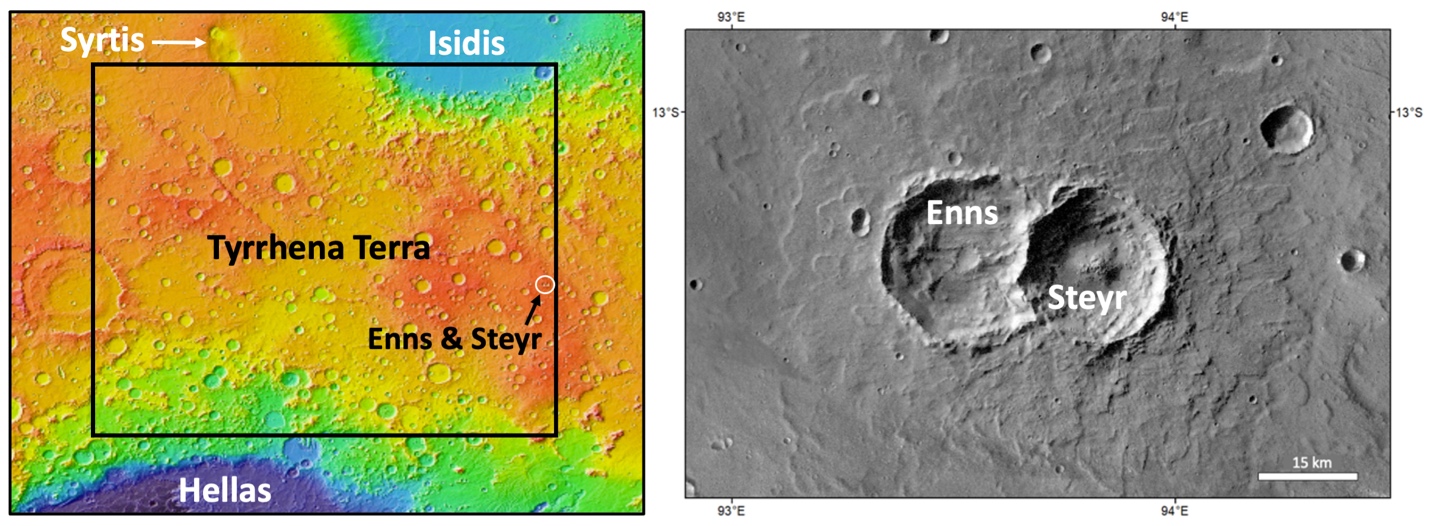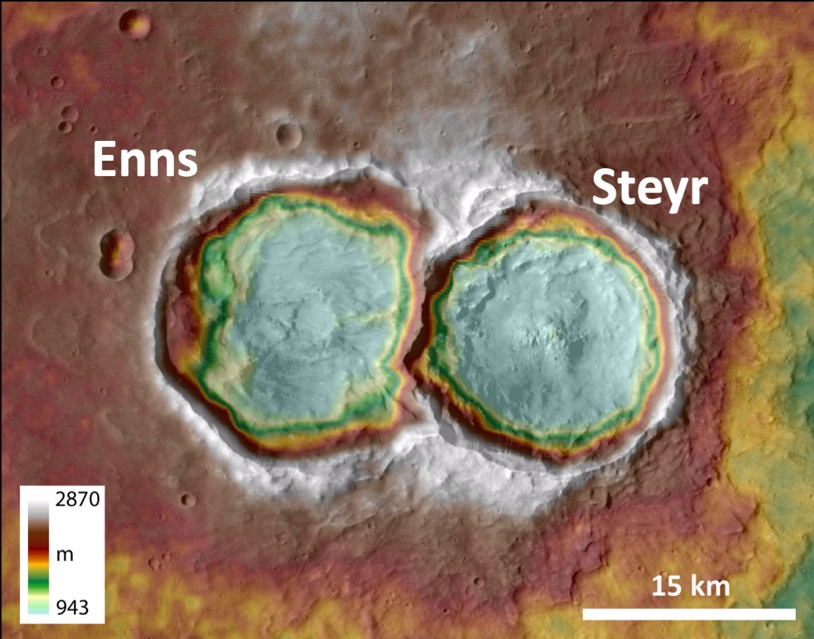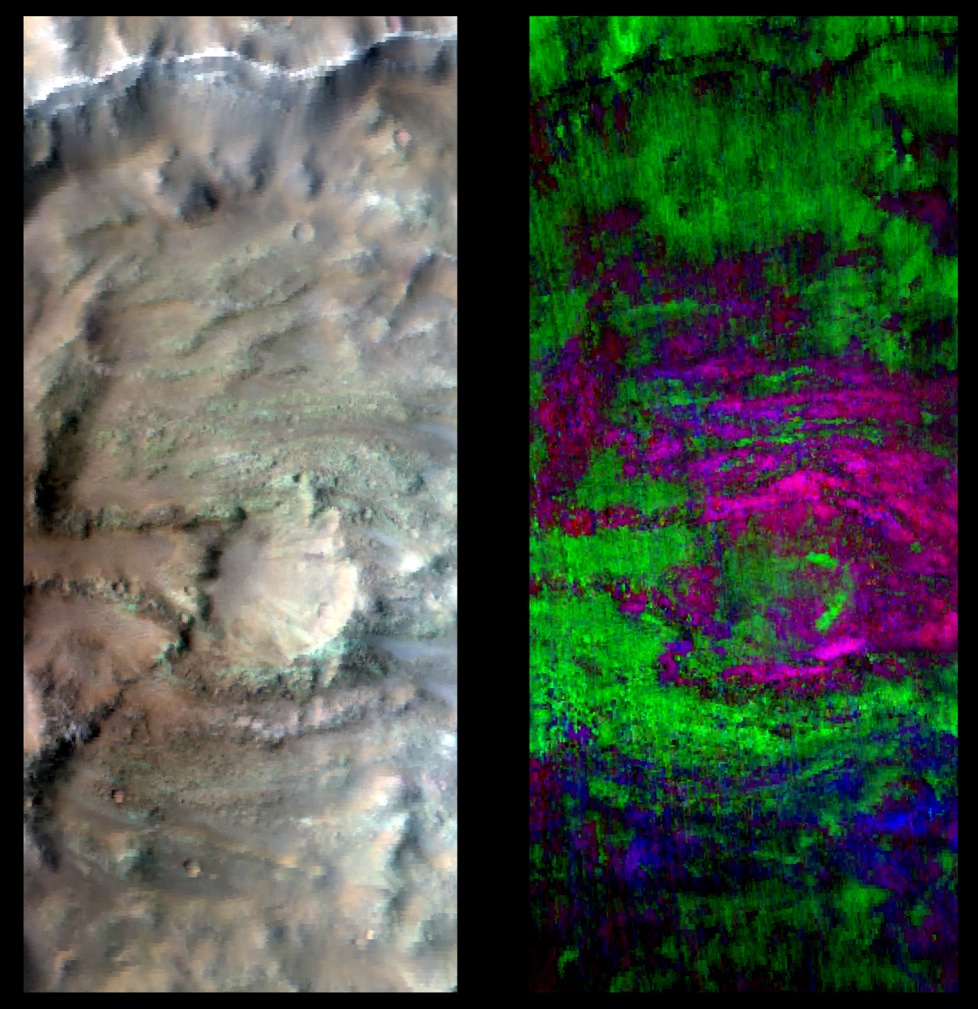
Phyllosilicates identified at Enns and Steyr craters in the Tyrrhena Terra region of Mars (located near the martian equator northeast of the large Hellas basin) provide clues to ancient geologic processes. A team of researchers led by SETI Institute Senior Research Scientist Janice Bishop is investigating this region using orbital images collected by NASA’s CRISM, HiRISE, and CTX instruments and ESA’s HRSC instrument. This view of CRISM mineral maps over HRSC topography created by Daniela Tirsch of the German Aerospace Center (DLR) in Berlin shows phyllosilicates and hydrated materials in pink-purple-blue tones and basaltic rocks in green. Initial results were presented at the 2022 Lunar and Planetary Science Conference before the craters were named.
Naming Enns and Steyr craters
The International Astronomical Union (IAU) is the internationally recognized authority for assigning designations to celestial bodies and their surface features. The IAU names small impact craters with diameters less than 50 km on Mars after towns with populations up to 100,000. Recently, SETI Institute researchers Janice Bishop and Lukas Gründler successfully requested the names of the Upper Austrian towns Enns and Steyr for two small craters that are key to their study of the Tyrrhena Terra region.

This broad plain resides between the Isidis and Hellas basins, two of the largest impact craters on Mars, and is intriguing for several reasons: First, there is evidence of aqueous activity, including valley networks, fluvial features, and phyllosilicates (minerals with a layered structure). Second, their proximity to the huge Syrtis volcano and the Isidis and Hellas impacts significantly altered the surface. Finally, the combination of ancient (3-4 billion years) and more recent (1-2 billion years) surfaces indicates active geology across this region.
Because these double craters overlap and affect each other, names for two nearby towns influencing each other were appropriate. The two ancient cities in Austria, Enns and Steyr, represent this idea. Additionally, both are connected by a river, which matches well with the abundant phyllosilicates and hydrous materials exposed by these craters and some fluvial features nearby. Finally, the valley that developed near the towns formed during the ice age, likely due to glacial melt, also parallels Mars.

Enns crater, located at 13.34°S; 93.53°E has a diameter of 23 km, while Steyr crater is at 13.35°S; 93.81°E and has a diameter of 20 km. These craters exhibit a nearly 2000 m rise in elevation from their floor at about 950 m to the crater rims close to 2900 m. The western crater was named Enns because this crater is older, and the town of Enns appears to be older than the town of Steyr in terms of settlement and municipal privileges.
Current work includes analyses of the central uplift region of these craters to understand the relationship of the phyllosilicates (pink) and zeolites (blue) that were uncovered by these craters.

Livio Tornabene of the SETI Institute and the University of Western Ontario in Canada prepared this view of CRISM mineralogy over HiRISE at the center of Enns crater.
For media questions, contact:
Rebecca McDonald
Director of Communications
SETI Institute
rmcdonald@seti.org





